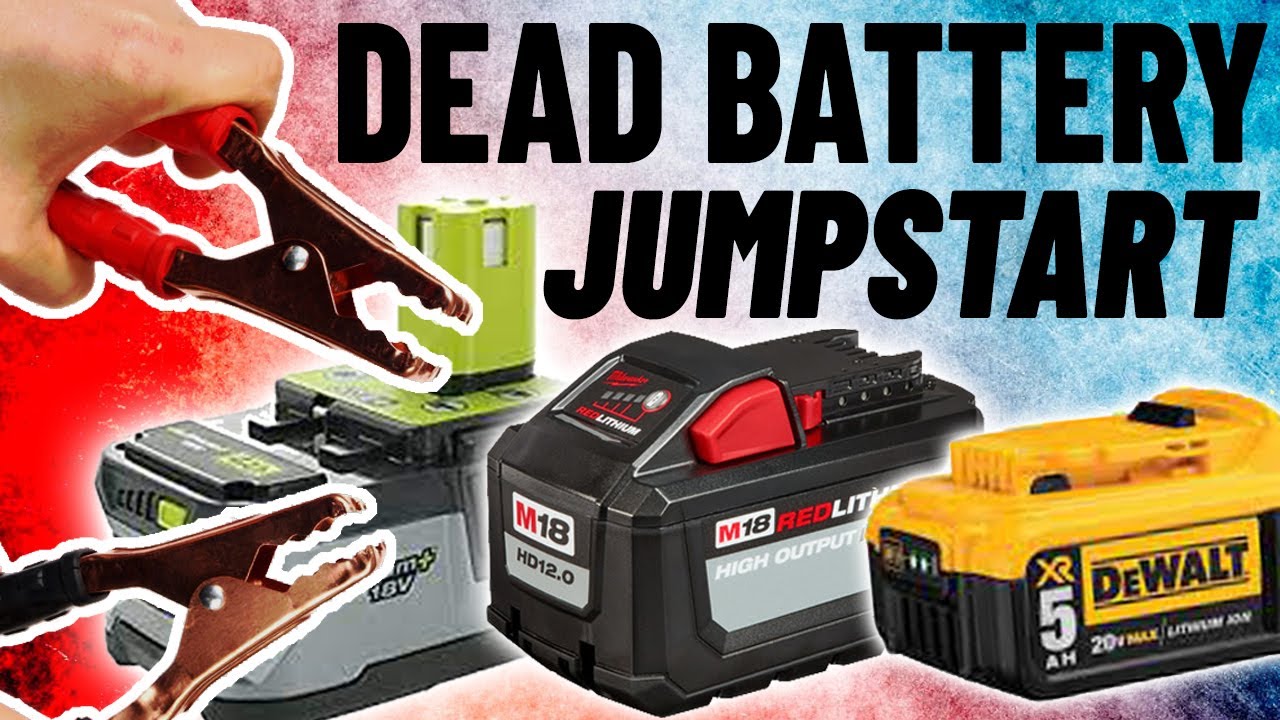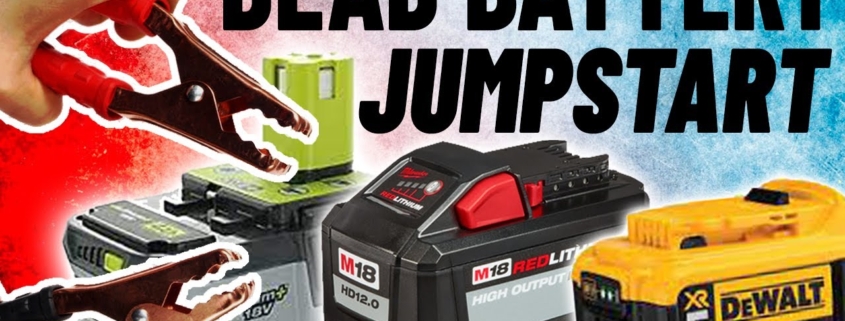Jumpstart Your Dead Lithium-ion Battery in Minutes with These Tips
So you’ve found yourself with a dead lithium-ion battery, wondering how to bring it back to life. In this article, we’ll guide you through jumpstarting a dead lithium-ion battery and offer some tips to help prolong its life in the future. But first, let’s better understand lithium-ion batteries and why they may die in the first place.

Common Causes of Dead Lithium Ion Batteries
There are several reasons why a lithium-ion battery might go dead, including:
- Over-discharging: Using the battery until its voltage drops too low.
- Overcharging: Charging the battery beyond its recommended voltage.
- Extended storage at a high or low state of charge: Storing the battery for a long time in a fully charged or fully discharged state can cause it to degrade.
- High temperatures: Exposing the battery to high temperatures can lead to capacity loss or even thermal runaway, a potentially dangerous event.
Signs of a Dead Lithium Ion Battery
A dead lithium-ion battery may exhibit one or more of the following signs:
- Inability to hold a charge or power the device.
- Swelling or bulging of the battery.
- Reduced runtime or sudden drops in charge level.
- Overheating during charging or discharging.
Safety Precautions
General Safety Tips
Before attempting to jumpstart a dead lithium-ion battery, it’s essential to consider safety precautions. Always wear safety goggles and gloves, and work in a well-ventilated area. If you’re unsure about your ability to jumpstart the battery, consult a professional safely.
Tools and Equipment
Use appropriate tools and equipment, such as a multimeter, compatible charger, voltage booster, or power supply. Double-check that all equipment is in good working order and suitable for use with lithium-ion batteries.
Methods to Jumpstart a Dead Lithium Battery
Jumpstarting a dead lithium battery can be difficult, but there are several ways to get your device back up and going. Charging with a compatible charger, voltage booster, and jumpstarting with an external power supply are all options.
Charging With A Compatible Charger
The battery can be charged initially using a suitable charger. To ensure that your device is charged correctly and without any danger of harm, you must be aware of the precise sort of battery it requires. After determining the proper charger, attach it to the device and let it charge until it has enough juice to switch on once more. Ensure all safety precautions when handling electronic devices near water or other flammable materials.
Using A Voltage Booster
Another option for jumpstarting a dead lithium battery is a voltage booster. Voltage boosters are explicitly designed for this purpose and can often be found online or in stores where electronics are sold. Connect one end of the voltage booster to your device’s power outlet and switch it on. The booster should then provide extra power to push start your battery, allowing you to use your device again. Monitor the voltage levels, as too much power, can damage your device.
Jumpstarting With An External Power Supply
Lastly, you may also consider jumpstarting your dead lithium battery using an external power supply if none of the above methods work. An external power supply is essentially like plugging your device directly into an outlet without using its internal batteries or chargers; however, doing this could potentially cause damage if not done correctly, so caution should be taken when attempting this method.
How to jumpstart a dead lithium-ion battery?
Jump-starting a lithium-ion battery can be tricky due to the need for careful monitoring of the charging process. However, with the proper knowledge and tools, it is possible to revive a dead battery safely.
Determine the Battery Voltage
The first step in jump-starting a lithium-ion battery is determining its voltage level. At room temperature, the ideal charge level should fall between 3.6 and 4.2 volts per cell. If the voltage is above or below this range, it likely indicates that the battery has been damaged by overcharging or undercharging, respectively, and will then require professional service before being recharged again.
Select an Appropriate Charger
Once the voltage has been determined, an appropriate charger must be selected not to damage the battery further when recharging. A constant current/constant voltage (CC/CV) charger should be used for most standard lithium-ion batteries.
Gradually Increase the Charging Voltage
The CC/CV charger will slowly increase the current until a maximum allowed charge rate for the specific battery model is reached. After this point, it maintains that current while gradually increasing the voltage until total capacity is achieved.
Monitor the Charging Process
While charging, it’s essential to closely monitor the current and voltage levels, as an improper balance could lead to increased damage on either account. Once full charge is reached, further monitoring should take place to ensure no overcharge occurs, as this can reduce the overall performance of the battery in addition to shortening its lifespan significantly if repeatedly done enough times over time.
How to prevent future lithium-ion battery failures?
To guarantee the durability and safety of lithium-ion batteries used in various devices, ranging from miniature electronics to large electric vehicles, it is vital to undertake measures to prevent potential failures. Four critical measures can help lower the loss risk, including utilizing high-quality chargers, correctly storing batteries, conducting routine maintenance, and monitoring temperature.
Using High-Quality Chargers
One of the most critical steps for ensuring the safe usage and prevention of lithium-ion battery failure is using only high-quality chargers for charging purposes. Many low-quality or counterfeit chargers lack safety features such as overcharge protection or fail to meet voltage standards which can cause damage to lithium-ion batteries if used for extended periods. It is recommended that users always purchase their chargers from trusted sources and verify their specifications before use.
Storing Batteries Correctly
Apart from using high-quality chargers, storing lithium-ion batteries correctly can also help minimize the likelihood of failure in the long term. Batteries should be stored at room temperature with moderate humidity levels when not in use to prevent a decrease in capacity since they are sensitive to extreme temperatures. Additionally, it is advisable not to leave batteries charging overnight, as this increases the risk of overheating, which could result in thermal runaway or fire hazards in severe cases.
Performing Regular Maintenance
Regular maintenance is another essential factor in preventing future lithium-ion battery failures. Over time, dust and dirt may accumulate on battery contacts which can hinder performance or cause operational errors leading up to eventual device failure. Therefore, users must regularly clean their devices and batteries with approved materials explicitly designed.
Monitoring Temperature
Finally, monitoring temperature while charging or operating devices with lithium-ion batteries is vital for increasing safety and reducing potential risks such as sudden shutdowns due to heat build-up or worse-case scenarios such as fires caused by thermal runaway events. If possible, try keeping your device away from direct sunlight or other sources of heat while actively charging or operating devices powered by a built-in li-ion battery pack, as this will help keep them within an acceptable range while being used safely over long periods without risking potential damages due to excessive temperatures reached during charging cycles.
In conclusion
Jumpstarting a dead lithium-ion battery is not as difficult as it may seem. With the right tools, anyone can revive their battery and return it to working order. However, if all else fails, it is essential to remember that seeking professional help is never wrong. Ultimately, remembering to stay safe, using the right tools and supplies, and following this guide can help you quickly jumpstart any dead lithium-ion battery.








